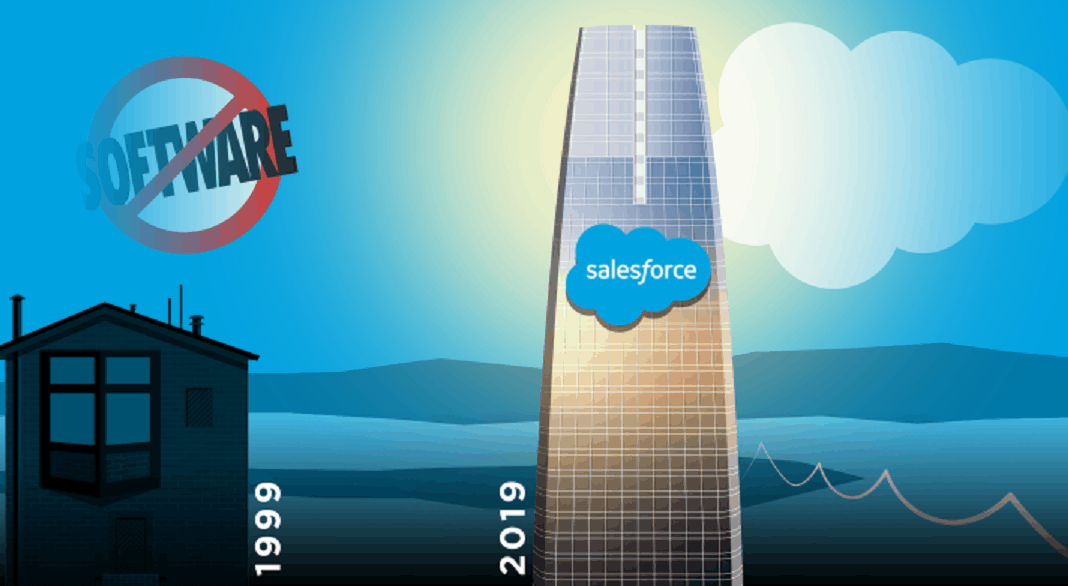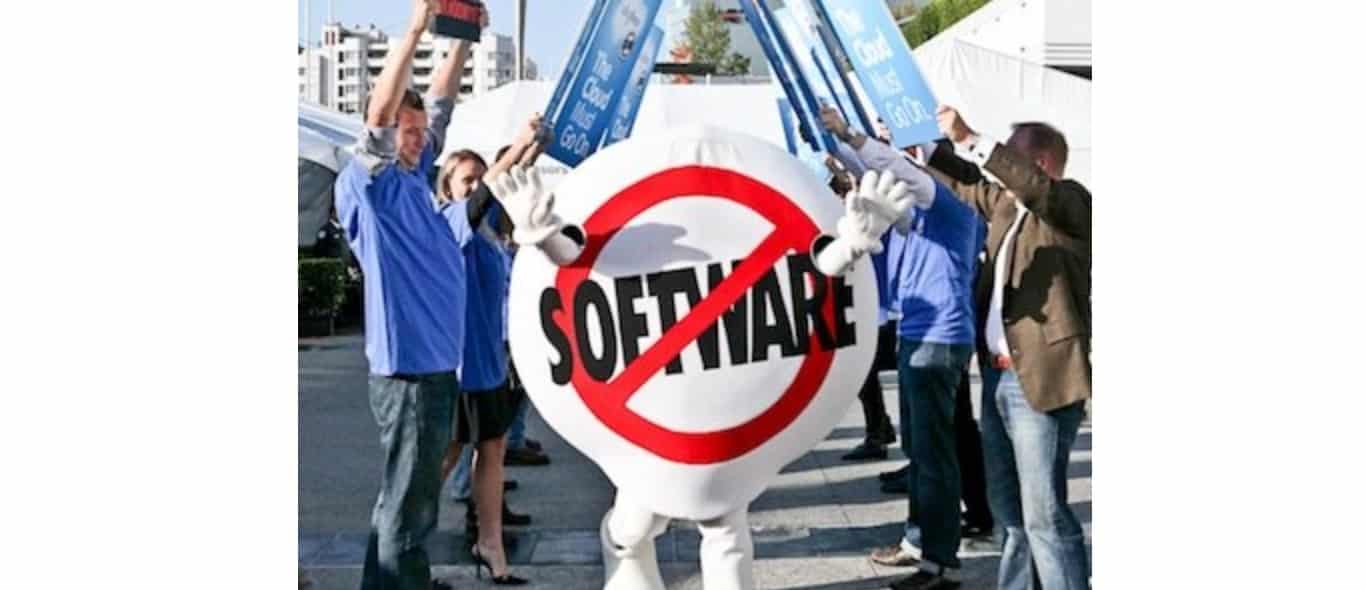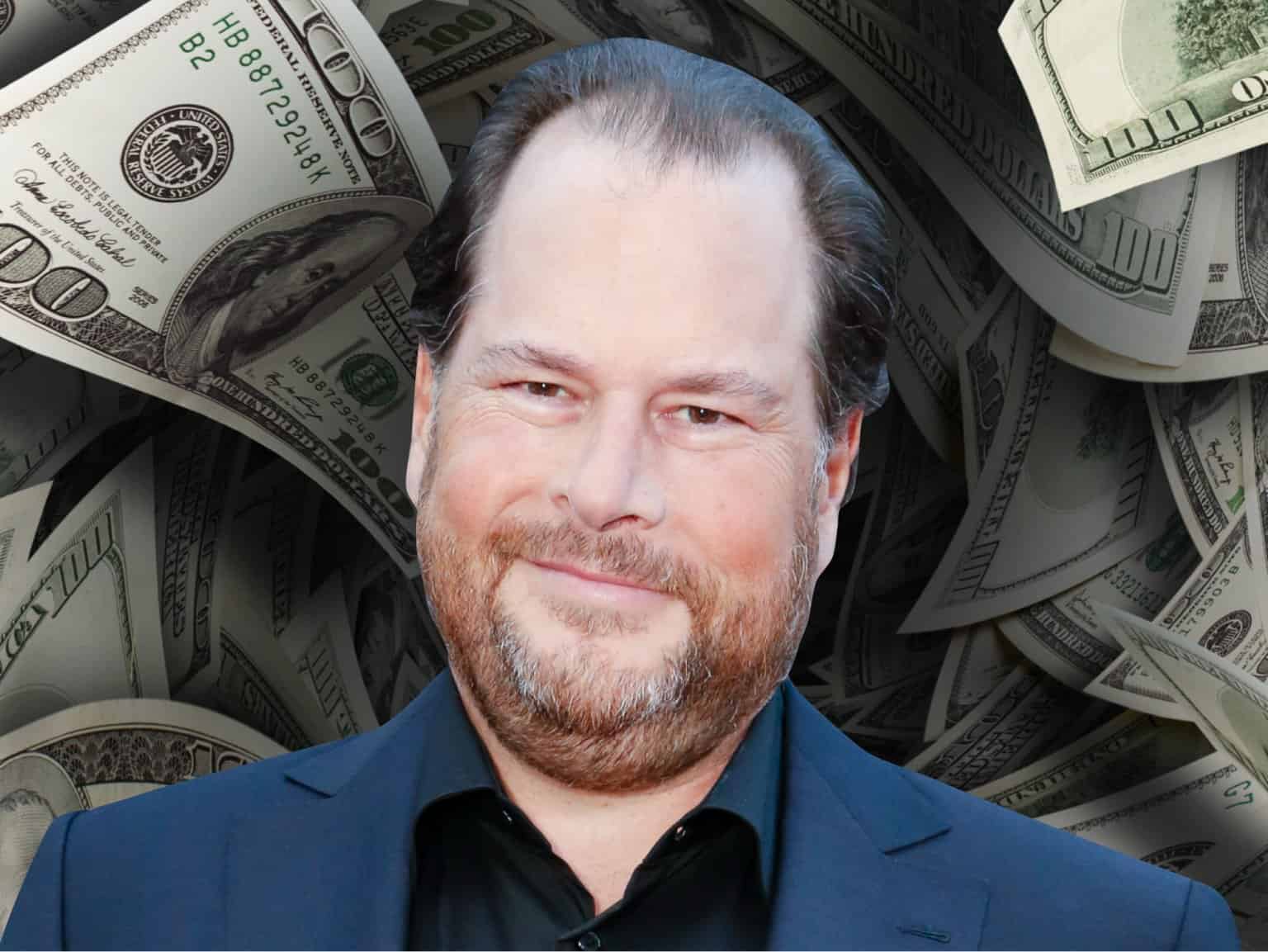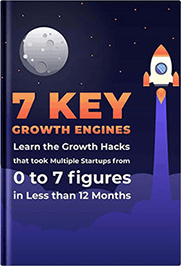
Salesforce is a cloud computing software-as-a-service company – basically, a customer relationship management platform based in San Francisco that super changes every part of your company that interacts with customers including commerce, marketing, sales, service and even more.
The story is therefore all about this company and how it managed to grow from that small startup business to a billion-dollar company.
To begin with, so that you may understand the whole story well, let’s have an insight into the difference between a millionaire and a billionaire. Millionaires and billionaires both have a huge amount of money and it could be easy to throw them in the same bus in your head when the truth of the matter is that there is a very huge gap between them.
Maybe we should use a different perspective, so that you fully understand but what we mean by having a huge gap between a millionaire and a billionaire. Suppose you differentiate a million and a billion using time, let us say seconds, one million seconds is just 12 days but one billion seconds is 32 years, quite a difference, right?
The bottom script of the whole of this introduction is a billionaire. Despite the fact that a millionaire has a lot of money, being a billionaire is not and should not even be grouped in the same universe or group as a millionaire.
The analogy we have used the time to put a difference between above will actually show you that you can become a millionaire rather easily as long you are able to earn $1 every second for 12 consecutive days. As much as it looks easy, it is not going to be that easy though but looks possible.
Now let’s get to the story. Marc Benioff is one of the billionaires in the world. To achieve the status, he started a profitable cloud-based software-as-a-service company in the world called Salesforce. The company was started way back in 1999 – a dot-com boom generation when the internet was gaining popularity, and it rode through the crash.
In 2009, Marc Benioff wrote the story of how he made his company different from others, and he managed to help Salesforce grow. The lessons learned from his book Behind The Cloud are:
i) Even though you are a B2B, market your product to the end user.
ii) Always do what is best for the consumer.
iii) When expanding to the international market, respect their culture.
The early life of Salesforce

No one had heard of any software company that had paid actors to carry ‘anti-software’ and march through the roads and offices and thereafter in front of a user conference of a software company. That is what Benioff exactly did. He marched a group of actors in front of Siebel System, a software company that sold relationship management software. This drew a lot of attention for him and the startup of his cloud-based software. A few months later at the end of that same year, Benioff again hosted a military themed party in which guests they gained more attention by throwing pieces of software into trash bins.
During these times, however, no one had believed that Salesforce would take on giant software companies until Business Insider wrote an article titled ‘the ant at the picnic’ that explained about the protest Benioff was trying to pull off against the software companies. Up till now, Salesforce has created a $250 billion market thanks to the ‘the ant at the picnic’. Even as we talk, companies that had started late in the ’90s including SAP and Oracle who have been creating a software(to be installed and updated on-premise) and selling to various businesses are now trying to build cloud products and are trying to catch up with the ‘force’ Benioff created.
Strategies Used by SalesForce to Grow their Company
1. Even when you are a B2B, Focus the marketing of your product to the end user
One of the most natural ways to becoming a billionaire is when your products are popular among people and when they talk about it. There are more strategies we can discuss that Mac Benioff used to ensure that he focused on marketing his product to the end user in the most effective way. We will list them below and discuss a little about them.
a) Unbiased Reviews
One of them was using written and unbiased reviews from individuals who made the purchases. The reviews would then be posted on personal blogs, and some would be published in the news outlet.
b) Testimonials
The other way Salesforce used to market itself more was by the use of testimonials. Testimonials entailed the users of the product to tell of the success it has brought to them. The testimonial was influential in encouraging people to come and try the product since it was a success to others.

c) Offline Events
i) Public Events
Although Salesforce is an online business, the company found offline events to be an interesting avenue to find more consumers of the product.
Salesforce did their marketing differently from other startups tech companies. They decided to venture in offline marketing, and all they did was to try something different which could yield more results. Salesforce held public events for the users of their product using the sales agents and the customer service people, and this was influential in marketing their product.
ii) City Tours
They used city tours to celebrate their customers. They used demos, customer presentations and posters of the users as a tribute. The city tours were influential in attracting customers as 80% of the prospect customers ended being the consumer of the product.
The company later adapted to hosting private cocktail parties at a lower cost, and it was focused on the users and aimed at attracting more consumers of the commodity.
2. Always do what is best for the consumer Regardless of whether it is a risk for your business
a) Multitenancy
Marc always had to make hard decisions which would end up hurting the business. Marc always prioritized on the consumers, and he often did what was best for them.
The company used “Multitenancy’’ and thus enabled their users to use the software from the Salesforce’s services. The users could use their data, this was risky for the business, but the consumers were happy that they could access their services.
Cloud computing is now standard, but back when Salesforce was being introduced, it was really scary. However, because it allowed Salesforce to give all users access to new features, they improved the experience of every user.
3. When expanding to the international market, respect their culture
a) Culture
When expanding overseas, it is always important to respect the culture of the natives. When Salesforce expanded to other countries, it first ventured to Dublin, Ireland. The reason why they chose there is:
i) They speak English.
ii) The tax rate was 12.5%.
The experience in Ireland was great, and this encouraged them to expand and adapt to the culture of the natives. When they expanded to Germany, they first hire the native speakers of German. By doing so, they prevented the incident of a language barrier which could have been present in the native speakers were not hired.
In England, for them to satisfy their high standards corporate partners, they held meetings in big hotels in London instead of renting expensive offices.
The Japanese are modest and respectful people. Marketing their product aggressively would not have worked in Japan. The organization then adapted and used a slow and eased conversation by mentioning famous names like the Amazon and Google as well as their company.
After they made a deal with the Japan post and Canon, they used it as a reference, and this made them attract more sales as they were associated with big companies.
In business, it is important to respect the culture of the natives just as much as it is done in real life situation.
Not every person can build a billion-dollar business. The learning of the lessons is essential in building a positive mindset as opposed to being a guide in helping you build a billion dollar industry.
By observing the thinking and the actions of Marc, we can learn the lessons which are important in the daily lives of business. The lesson is vital for entrepreneurs who inspire and grow their company.
4. Knowing your Brand and The Impact it has on Your Products
Making things easier and being seen as innovation was the emphasis of Salesforce as their product decisions grew. That means if you have a well-defined brand or company it will help in keeping your product development online and very focused.
Knowing your brand and the impact of the products on users will help you stand out and at the same time tells users what they can expect from your brand or company. You can recognize and define your brand further by:
i) Sending out an NPS survey and focusing on the qualitative feedback – During this service you can let your users leave written feedback on the experience they get from your product or brand in general, aside from just priding the numerical score. You can then use a word cloud generator to organize survey responses.
ii) Create a spreadsheet to manage the value – Once you create a spreadsheet, you can connect each of your product offerings to the user values and your brand’s values as well. This kind of visual analysis allows you to see your product from the other outlook that you might not see yourself.
5. Making YourSelf More Valuable and Beating competition
There are 3 main competitive advantages of SaaS companies and they include network effect, ecosystem creation, and data network effects. That is what we have learned from the story of the Salesforce. Ad as for Salesforce they made sure they created the best ecosystem for the emerging SaaS market at the time.
Depending on what your brand and company offer or want to offer, there are a number of ways you can build competitive advantages:
i) Understand why users would want to choose your competitor over you – You can even stat forums and ask people why they use or prefer to use a certain product. The product should be as competitive as your product or even more. This kinds of forums will let you know what the people are not getting from your competitors. You will be able to carve out a unique niche that will offer your users something is very valuable in the most outstanding way and most probably what they are not getting.
ii) Release free tools of your product to make users see how useful your product is – In quite competitive environments where customers might not understand immediately the value of your product or where there’s a lot to gain, getting the people to try your product can hang tough. You can do free trials or free tools or free offers to try and lure them in. Just like Salesforce very 1st CRM, you can get your service or product in a wide audience and allow people to experience the value of what you offer themselves.
6. Improving your current process or tool
Salesforce and their anti-software campaign were entirely based on that on-premise software was not only too hard to install but also to upgrade. They also thought that users would want something that would suit them and handle with ease.
That said, to create a service or product that people will pay attention to, you will need to solve a problem better as compared to other solutions available at the moment. That is what Benioff did and he came up with cloud-based storage that could save many people from buying software that would again be updated whenever an update was created from the product owners.
To reduce friction in your products you can do the following:
i) Find out and break down your customers experience one by one – There is much more friction in products than many companies know or understand. What you are supposed to do therefore is to make a list of all decisions your customers need for you to complete a task in your product then question each one of them.
ii) Prune features by determining of how relevance they have to your product – Some of the features you had made on your product might have probably turned out to have the popularity or even the utility you had earlier on anticipated. Therefore it is recommended to evaluate and get rid off any features in your product that would otherwise add more difficulty to the experience of the user regardless of whether you are attached to the feature.
The Future of SalesForce
Salesforce is still on the rise even after rising and rising in recent years. Salesforce had $10.48 billion sales in 2018, a 25% increase from the previous year 2017. We are in 2019, but Benioff has already set his eyes 3 years later. He is targeting $20 sales in 2022 when asked in an interview with CNBC.
The 2022 goal is comparatively on par with the progression of the company in recent years. In just 5 years the company has grown by a whopping 106%. The progression and growth easily show that Benioff’s dreams are not only valid but very practical putting in mind ion what his company has been able to do the last years.
One of the key things that Salesforce has done, is signing a deal with Mulesoft last year, a deal worth $6.5 billion. Mulesoft, like Salesforce also offers cloud services and it allows developers to connect different apps together.
The Summary of the Amazing Benioff’s Story

- On September 25th, 1964, Marc Russell Benioff was born and raised in San Francisco.
- Benioff learned a lot from his father, owned a local department store especially the work ethics
- During his high school days, Benioff showed flashes of what he is now when he sold ‘How To Juggle’- his first software to a computer magazine for $75.
- At the age of 15, he came up with Liberty Software – a one-man company that made games for Atari 800 computer.
- By the time he was turning 16, the little boy from San Francisco was pulling in a whopping $1,500 per month, something that most teenagers can only dream of. This was enough for him that even after he graduated from high school, he paid his tuition fee at the university(University of Southern California.
- At USC Benioff enrolled in a summer internship with Apple company and worked as a programmer under Steve Jobs the co-founder. It is during this summer that Benioff realized that it was very possible to encourage revolutionary ideas and innovations as an entrepreneur.
- At the time, Benioff had planned to stay creating programs and programming for the rest of his life. However, one of his USC professors suggested to him that he had a business mind that if followed well, could have elevated him to even greater heights. Due to that, he took a customer care role at Oracle – a high flying software company at the time once he was out of college.
- At Oracle, the boy rapidly made up the ladder to the highest of ranks. At the age of 23, he was the Rookie of the year at Oracle and at 26 years of age, he became Oracles Vice President. The youngest person ever to attain such a rank in the company’s history. This rank earned him a whopping $300,000 salary.
- During his time at Oracle, he had a chance to meet Ellison a billionaire who really mentored Benioff when they became so close.
- 13 years later, Benioff starts itching to start something new and with a few Oracle veterans, Salesforce is born.
- Salesforce main idea was to create full access to business apps through their browsers without having to worry about buying software and installing it. This idea was even to beat what Oracle was doing, the company he had worked with for 13 years.
- He received $2m funding from his close friend Ellison who even sat on the board of directors of Salesforce. Things turned sour between the two because Salesforce already looked like it was going to be a direct competitor to Oracle.
- Salesforce later on in the early 2,000s survived the dot-com bust and became one of the earliest if not the earliest prominent modern cloud computing companies.
- In 2004 June, Salesforce held its IPO and raised $110 million which cost $11 per 1 share. As we talk, 1 Salesforce share goes for $140.
- At the time, still in 2004, Paul Pelosi the husband of Nancy Pelosi of US House of Representatives Minority leader jumps onto the Salesforce bandwagon.
- Since then, among other innovations and investments, Salesforce has become a force and in August 2018, Keith Block Oracle’s one-time executive was named the co-CEO and he is on an even keel with the founder of Salesforce itself Benioff.
Wrapping it Up
Usually, in the business industry, there are no shortcuts. Growth hacks and pickaxes usually work quite faster but they might not be able to set you up the Salesforce way. to go the Salesforce way, you need strategies and never-ending innovations to elevate you that quick.
There is no chance Salesforce would have been where they are with sticking to CRM alone. Their CRM was like a crowbar and it plunged them into cloud space. Aside from that, new strategies and innovations to execute anything that came there way was the key to the huge success the company has had.
All that sums up why Salesforce remains a key force in the SaaS industry and you can as well do it with your brand.




